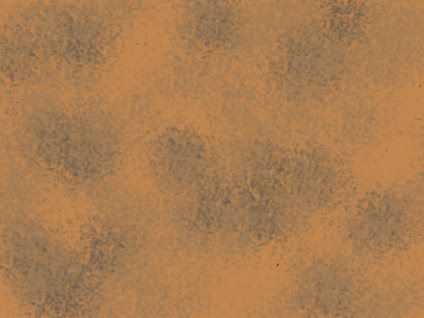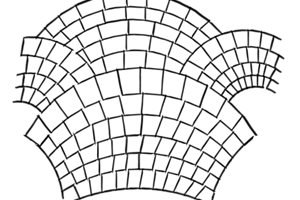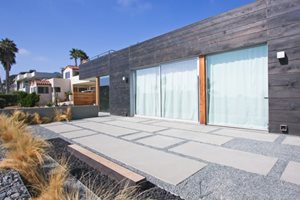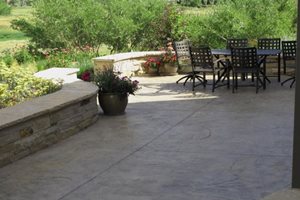Concrete Color Chart
Compare the five most popular colors for decorative concrete outdoorsIn its natural state, concrete has a light gray color. However, over the last few decades it has become common to color concrete a variety of different hues. There are many techniques for coloring concrete that produce different strengths of color. For outdoor concrete, most homeowners prefer earth tones that blend with the surrounding landscape and the exterior of their home. Following are the five most popular color families for concrete patios, driveways, pool decks, paths and more.
Tan
Everyone’s skin looks better with a little color, right? The same goes for concrete…tan is good. If traditional gray concrete is too harsh for your liking, you can warm it up by coloring it light brown. Tan will sometimes have hints of white or yellow. It is a good color choice for outdoor concrete because of its earthy and subtle shade.
- Common manufacturer names: golden wheat, buff, beige, adobe, sand
- Can be achieved with stains, integral pigments and color hardeners
Brown
If you’re a chocolate connoisseur or leather lover, brown is the perfect color for your concrete. With a richer tone than tan concrete, brown will impart a sense of luxury to your outdoor living space. Many homeowners love brown concrete because it does not show muddy footprints or other dirt.
- Common manufacturer names: cola, umber, walnut, cocoa, mocha
- Best achieved with stains and color hardeners
- Integral pigments make a great base for brown concrete, but for deeper colors topical coloring products are often applied
Gray
Do you find yourself drawn to the ultra-modern and ultra-swanky lifestyle of the ‘50s and ‘60s? Then gray concrete will be perfect for your home. Gray concrete has a crisp, clean feel. You can simply leave the concrete uncolored, or as many homeowners do, enhance the gray with added color.
- Common manufacturer names: slate, pebble, charcoal, pewter, silver, smoke
- Can be achieved with color hardeners and integral pigments
Pro Tip: For my clients that are looking for a modern effect, I add white to the mix so that the resulting concrete is bright and crisp.--Micah Helkenberg, owner of DC West Construction in Carlsbad, CA
Amber
Amber-colored concrete might be compared to a pale ale or orange-ish color. Don’t think tangy citrus orange, think of clay pots from the Mediterranean. Muted amber tones can be used to give concrete a warm, welcoming color. Concrete colored with amber hues is especially suited to homes with a Spanish-style exterior or clay roof tiles.
- Common manufacturer names: terra cotta, burnt orange, bronze, gold
- Can be achieved with stains, color hardeners and integral pigments
Red
How can you go wrong with the color of love? While not as vivid as the typical heart red we envision in our minds, red concrete is quite striking. Red is a popular color choice for concrete work in the Southwest, or for those homeowners wanting to imitate brick paving. Often red and brown are combined for a more subdued color.
- Common manufacturer names: brick, rose, chestnut
- Best achieved with stains or color hardener
- Integral pigments make a good base for red concrete, but to get a deeper color topical coloring agents are often applied
This is by no means an exhaustive list of the color possibilities for concrete. The above options can be mixed or diluted to create numerous other colors. And there are also more options than just earth tones, such as blues and greens.

 Backyards
Backyards
 Front Yards
Front Yards










